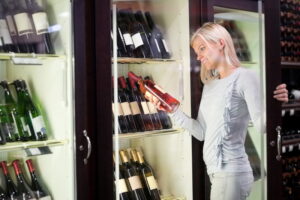Does your business’s commercial cooler have a steadily growing layer of icy buildup around the inside? Does it remind you of Antarctica? Is it trying to take over the space you’d like to fill with products for sale? There is one very simple reason for this: warm, humid air. If there wasn’t any humidity in the air, there wouldn’t be any water that could turn into ice.
So how is this humid air getting into your commercial cooler? Well, that question doesn’t have quite such a simple answer. We’ll explain some of the main reasons for ice to develop inside your commercial cooler to give you a better idea of what you can resolve yourself and when to call for repairs.
Seals
Coolers have soft rubber gaskets around their doors. This makes for a tight seal until the rubber starts to degrade, become brittle, crack, or even fall off. If you have a problem with ice buildup, it’s time to take a close look at your seals.
Door Mechanisms
It could be that the closing mechanism is encountering a problem and the doors aren’t smoothly sealing all the way when they’re allowed to swing shut. Or it could be that after years of holding up a heavy door, the hinges have started to pull downward, leaving the door misaligned.
Evaporator Coil
If you have a lot of ice around the evaporator coil, that could be because it is dirty, because the thermostat is malfunctioning, or it’s simply set to the wrong temperature.
Fans
Check that the fans on the evaporator coil are running and that they are not moving sluggishly or rotating in the wrong direction. These fans help to evenly distribute the temperature, so there aren’t very warm or very cold spots.
Defrost Timer
This is a mechanism that allows the cooler to defrost itself at regular intervals. If that defrost cycle isn’t happening, it may be a problem with this timer.
Drain Line
The evaporator coil has a drain line, allowing moisture to siphon away. If that drain line becomes blocked or clogged, you’ll have a moisture problem in your cooler—and that moisture can easily become ice.
Insulation
The insulating panels that keep the cold air in your cooler and the warm air out have a big job to do. If they’ve been doing that job for a very long time, such as over a decade, the insulation itself may be deteriorating.
Prevention
The best way to avoid repairs is with regular maintenance. This can improve the efficiency of your commercial cooler, catch problems before they worsen, and even lengthen the lifespan of your cooler. And when you do notice a problem, getting repairs done as promptly as possible will decrease the likelihood of having a major cooler failure.
If you need to schedule maintenance or repair, or you have any questions about commercial coolers in Plainfield, IL, we’d love to hear from you!
Call J&A today, Sleep-tight tonight!

